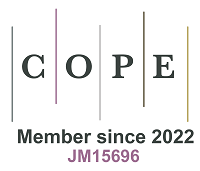Editorial for the special issue: cognitive computing and cyber physical systems for smart environments and green manufacturing processes, management and projects
The integration of Cognitive Computing and Cyber-Physical Systems (CPS) marks a significant shift in the approach to creating smart environments and sustainable manufacturing. In smart environments, Cognitive Computing creates a system where everyday objects can communicate, learn, and adapt to human needs. In manufacturing systems, furthermore, the integration of CPS coordinates synchronized cooperation among interconnected devices, machines, and processes. By adding intelligence into manufacturing workflows, we can enable more sustainable practices and pave the way for a “green” future.
The Special Issue consists of papers that present research advancements and case studies that demonstrate the impact of Cognitive Computing and CPS on reducing environmental footprints, optimizing resource adoption, and enhancing overall efficiency in manufacturing. This is the case of the research results reported in[1] that are focused on the complexity of CPS and on how to mitigate complexity. The authors elaborate on the concept of Pre-Integrated Architectures (PIARCHs) from the point of view of CPS complexity and show the added value of their results in two cases: localization and perception of an automated vehicle and Urban Automated Driving.
Moreover, the Special Issue expands its scope to cover industrial processes and project management, highlighting the role of intelligent systems in overseeing and optimizing complex processes with an emphasis on sustainability and green computing. In[2], the authors present and evaluate a workflow that monitors sensor observations over time to identify and predict relevant changes or anomalies in the cure cycle (CC) industrial process. Their model exploits machine learning techniques for monitoring and early validating the CC process according to the time-temperature constraints in a real industrial case study, such as CC data produced by the thermocouples in the autoclave. The model proposed by the authors is flexible and can be adapted to other manufacturing targets by adopting specific datasets and tuning thresholds. The final objective is predicting future temperatures minute by minute to forecast if the cure will satisfy the constraints of quality control or raise the alerts for eventually recovering the process.
The integration of green computing principles into project management offers added value in several key aspects. Projects that incorporate sustainable practices are better positioned to navigate risks associated with environmental regulations and societal expectations, mitigating potential legal and reputational challenges. Green computing fosters a culture of innovation within project teams, encouraging creative solutions that improve efficiency and resource utilization. In today’s business landscape, where environmental consciousness is growing, projects that integrate green computing practices gain a competitive edge. This is the principle that guided the authors of[3] in developing their research on environmental sustainability in manufacturing by proposing a model that leverages the Goal Question Metrics approach and technologies of Industry 4.0. These authors have defined a novel model that can be used as a conceptual tool to support improvement programs in environmental sustainability and evaluated their research results in the context of the automotive industry. The model can be used both as decision support for managers and professionals interested in creating systems for managing environmental resources and as a guideline for their implementation. The model explicitly represents high-level corporate goals, linking them with the strategies and support technologies necessary to achieve those objectives. The results of the application of the model show how the approach, combined with the implementation of Industry 4.0 technologies, contributes to the efficient use of natural resources and also reduces the emissions in the atmosphere.
Last but not least, the authors of[4] present a technical note on how to develop and evaluate blockchain-based solutions to improve loyalty programs with Non-Fungible Tokens (NFTs) in agribusiness industries. This work not only presents the design and preliminary development of a blockchain software system but also emphasizes the added values of the use of NFTs and personalization for customers and the adoption of the metadata feature for using media to encourage and assist customer brand awareness and repurchase. This technical note can be of interest to researchers and developers of blockchain technology since it presents a safe and transparent way to use NFTs to increase brand loyalty in the agricultural business and other sectors.
Although these four papers provide interesting insight into Cognitive Computing and CPS, they do not cover all the related topics. Integrating Cognitive Computing and CPS, especially in the context of Green Computing, remains an open area of research. Additionally, new research ideas can arise from the recent advancements in Generative Artificial Intelligence. However, we believe that the selected papers will be of interest to the research and development communities working on these topics.
We would like to express our gratitude to the authors for their contributions and to the reviewers for their valuable suggestions that have helped improve the quality of the papers. We also extend our sincere appreciation to Prof. Witold Pedrycz, the Editor-in-Chief of the Journal of Smart Environments and Green Computing, and his team of Assistant Editors for their support and commitment in producing this Special Issue.
DECLARATIONS
Authors’ contributions
Wrote and reviewed the article: Loia V, Gaeta A.
Availability of data and materials
Not applicable.
Financial support and sponsorship
None.
Conflicts of interest
Both authors declared that there are no conflicts of interest.
Ethical approval and consent to participate
Not applicable.
Consent for publication
Not applicable.
Copyright
© The Author(s) 2024.
REFERENCES
1. Gougeon P, Hamelin E. Development complexity of cyber-physical systems: theoretical and practical benefits from Pre-Integrated Architectures. J Smart Environ Green Comput 2023;3:3-17.
2. Bangerter ML, Fenza G, Gallo M, et al. A case study in smart manufacturing: predictive analysis of cure cycle results for a composite component. J Smart Environ Green Comput 2022;2:76-89.
3. Nota G, Lazo AT. Leveraging the GQM+ Strategy approach and Industry 4.0 technologies for environmental sustainability in manufacturing. J Smart Environ Green Comput 2022;2:143-62.
Cite This Article
Export citation file: BibTeX | RIS
OAE Style
Loia V, Gaeta A. Editorial for the special issue: cognitive computing and cyber physical systems for smart environments and green manufacturing processes, management and projects. J Smart Environ Green Comput 2024;4:1-3. http://dx.doi.org/10.20517/jsegc.2023.23
AMA Style
Loia V, Gaeta A. Editorial for the special issue: cognitive computing and cyber physical systems for smart environments and green manufacturing processes, management and projects. Journal of Smart Environments and Green Computing. 2024; 4(1): 1-3. http://dx.doi.org/10.20517/jsegc.2023.23
Chicago/Turabian Style
Loia, Vincenzo, Angelo Gaeta. 2024. "Editorial for the special issue: cognitive computing and cyber physical systems for smart environments and green manufacturing processes, management and projects" Journal of Smart Environments and Green Computing. 4, no.1: 1-3. http://dx.doi.org/10.20517/jsegc.2023.23
ACS Style
Loia, V.; Gaeta A. Editorial for the special issue: cognitive computing and cyber physical systems for smart environments and green manufacturing processes, management and projects. . J. Smart. Environ. Green. Comput. 2024, 4, 1-3. http://dx.doi.org/10.20517/jsegc.2023.23
About This Article
Special Issue
Copyright
Data & Comments
Data

 Cite This Article 3 clicks
Cite This Article 3 clicks











Comments
Comments must be written in English. Spam, offensive content, impersonation, and private information will not be permitted. If any comment is reported and identified as inappropriate content by OAE staff, the comment will be removed without notice. If you have any queries or need any help, please contact us at support@oaepublish.com.